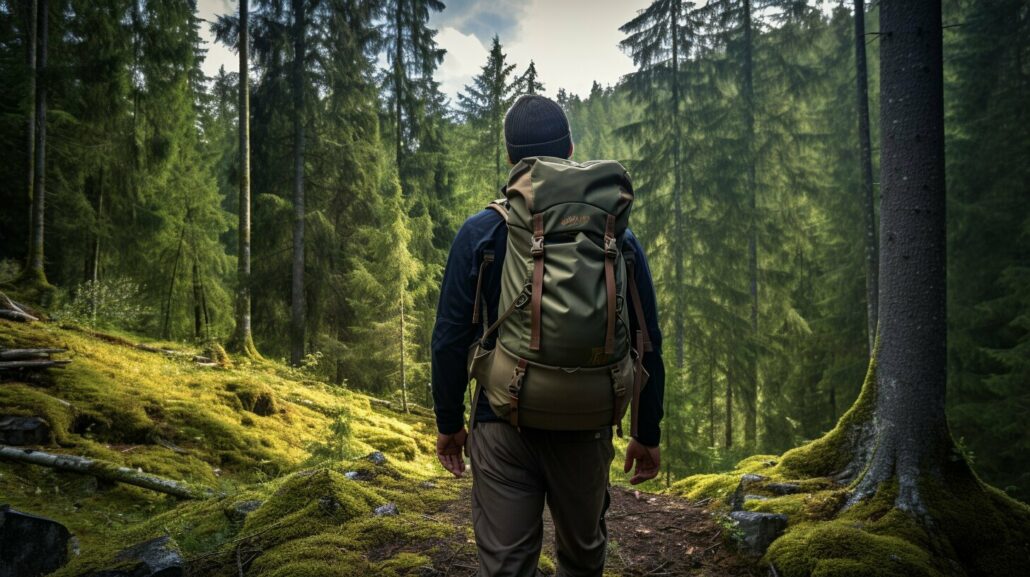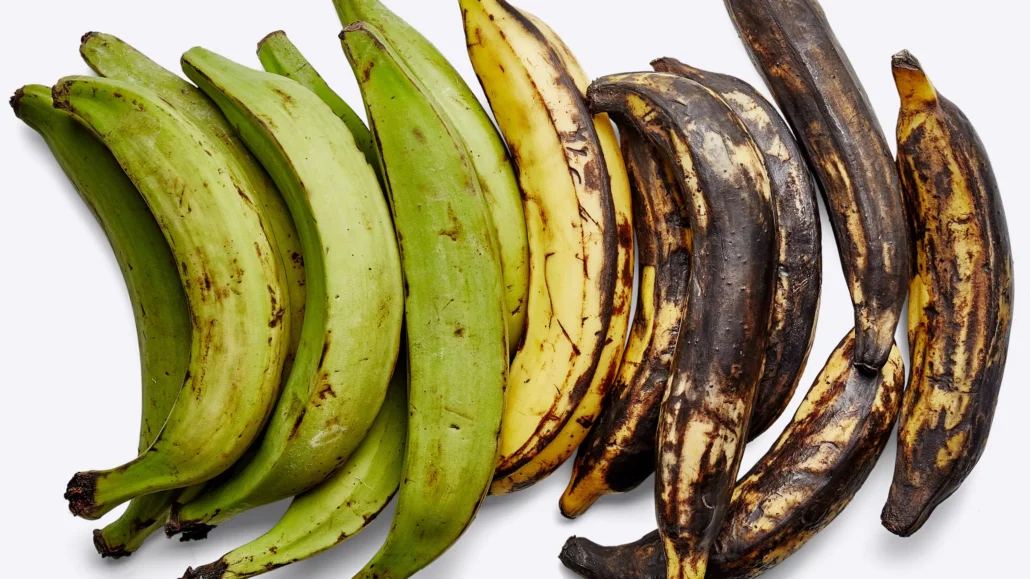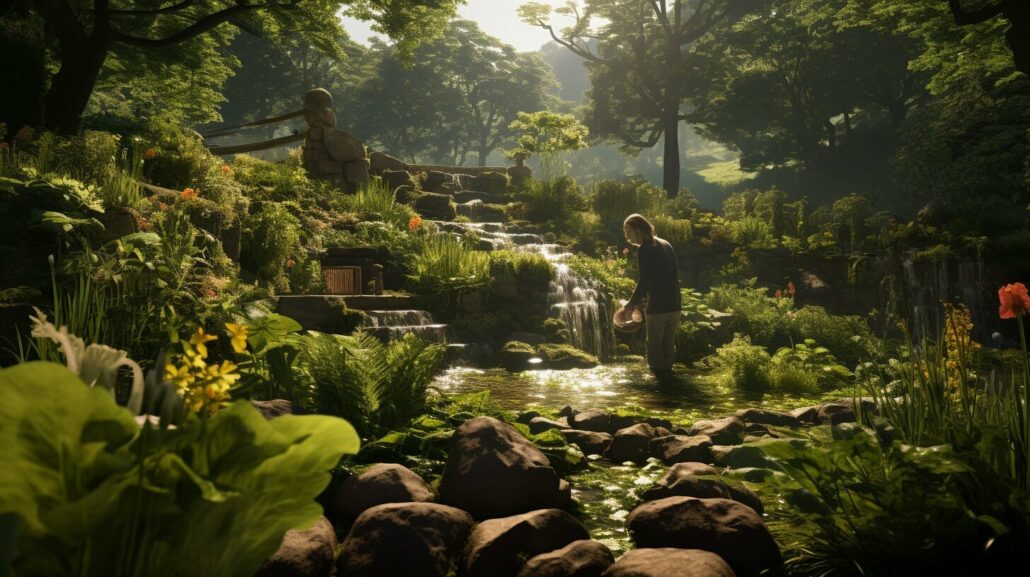Are you ready to explore the world of bushcraft and prepping, and discover the key survival skills necessary for self-reliance in the wild or during emergencies?
In this comprehensive guide, we will delve into the differences and similarities between bushcraft and prepping. We will explore essential wilderness survival skills, outdoor techniques, and strategies for both the wilderness and emergency situations. Whether you are interested in honing your outdoor skills or preparing for potential disasters, this guide is sure to provide valuable insights and resources.
Key Takeaways
- Bushcraft and prepping are related but distinct practices
- Skills such as building shelter, starting fires, and finding food are valuable for survival in various scenarios
- The right mindset and attitude are crucial for survival
- Resources such as the Bushcraft USA forums and recommended books can provide in-depth knowledge on survival skills
- First-aid skills and knowledge of wild edible plants can be essential for self-reliance in the wild
Understanding Bushcraft and Prepping
To better understand the differences and similarities between bushcraft and prepping, let’s start by defining these two practices and exploring their core survival skills.
Bushcraft refers to the set of skills and knowledge necessary for surviving and thriving in the wilderness. It focuses on using natural resources and traditional techniques to meet basic needs such as food, water, shelter, and fire. Bushcraft enthusiasts aim to develop self-reliance and a deep connection with nature.
Prepping, on the other hand, involves preparing for potential disasters or emergencies, both natural and man-made. Preppers stock up on essential supplies and develop contingency plans to ensure their survival and the well-being of their loved ones. They emphasize preparedness and readiness for any situation.
| Bushcraft | Prepping |
|---|---|
| Focuses on wilderness survival skills | Prepares for a wide range of emergencies |
| Relies on natural resources and traditional techniques | Stocks up on supplies and develops contingency plans |
| Emphasizes self-reliance and connection with nature | Stresses preparedness and readiness for any situation |
While bushcraft and prepping have distinct objectives, they are not mutually exclusive. Many preppers are interested in learning bushcraft skills because they recognize the value of being able to rely on their own knowledge and abilities in survival situations.
“The ability to adapt and think on your feet is more important than the supplies you have.”
Important bushcraft skills for preppers include fire starting, having a reliable knife, building shelter, and having strong cordage. These skills can be practiced in your own backyard or during camping trips, allowing you to develop the necessary proficiency to navigate challenging environments.
The Importance of Bushcraft Skills for Preppers
- Fire starting: Mastering different fire-starting techniques ensures your ability to create warmth, cook food, and purify water even without modern tools.
- Knife skills: A reliable knife serves multiple purposes in survival situations, from cutting and carving to building shelters and preparing food.
- Shelter building: Knowing how to construct various types of shelters using natural materials provides protection from the elements and enhances your chances of survival.
- Cordage: Strong and versatile cordage made from natural fibers or synthetic materials is essential for tying knots, building traps, and creating makeshift tools.
Resources, such as the Bushcraft USA forums, offer free bushcraft courses with certification upon completion, providing a valuable opportunity to enhance survival skills. Additionally, there are several books recommended for those wanting to delve deeper into the world of bushcraft and self-sustaining practices.
By combining the practical knowledge and skills of both bushcraft and prepping, individuals can increase their chances of survival in various scenarios, fostering self-reliance and preparedness for any situation.
Bushcraft Skills for Survival
Building a strong foundation in bushcraft skills is essential for survival, and in this section, we will explore the key techniques such as fire starting, shelter building, foraging, and cordage that are fundamental to bushcraft and prepping.
Fire starting is a critical skill in any survival situation. Whether you need to stay warm, cook food, or signal for help, knowing how to create fire is essential. One effective technique is using a fire starter kit, which typically includes a ferro rod and striker. By striking the rod with the striker, sparks are produced, igniting tinder and starting a fire. It is important to practice fire starting in different conditions and with various materials to become proficient in this skill.
When it comes to shelter building, understanding different structures and materials is key. A basic but effective shelter is the debris hut, which can provide protection from the elements. By constructing a framework of branches and covering it with leaves, moss, or other natural materials, you create a waterproof and insulated shelter. It is important to consider the location and available resources when building a shelter, as well as the potential for fire safety.
Foraging for food is another crucial bushcraft skill, especially in a survival situation where resources may be scarce. Learning to identify edible plants and fungi in your environment is essential. One common edible plant is the cattail, which can be found near bodies of water. The cattail offers a variety of edible parts, including the shoots, roots, and pollen. However, it is vital to properly identify plants and avoid any potential poisonous species.
| Bushcraft Skills | Description |
|---|---|
| Fire Starting | Creating fire using various techniques and materials. |
| Shelter Building | Constructing shelters using natural materials for protection. |
| Foraging | Identifying and harvesting wild edible plants for sustenance. |
| Cordage | Making and utilizing strong ropes or cords for various purposes. |
Importance of Cordage
Cordage, or strong ropes and cords, is a vital tool in bushcraft and prepping. It can be used for a range of purposes, from building shelters and crafting traps to securing gear and creating tools. Natural materials such as plant fibers, animal sinew, and even inner bark can be used to make cordage. Learning how to create different types of cordage and knots is essential for survival in the wild or during emergencies.
Building a strong foundation in bushcraft skills, such as fire starting, shelter building, foraging, and cordage, equips you with valuable knowledge and abilities for survival. By practicing these skills and continually expanding your understanding of the natural world, you increase your self-reliance and adaptability in challenging situations. Remember, survival is not just about the supplies you have; it’s about the skills and mindset you possess.
Prepping: Beyond the Skills
Prepping involves more than just mastering survival skills, and in this section, we will delve into the mindset, preparedness, and essential gear necessary for effective prepping. While acquiring the right skills is important, having the right attitude and mindset can make all the difference in a survival situation. The ability to adapt and think on your feet is often more crucial than the supplies you have.
When it comes to preparedness, it’s essential to have a well-thought-out plan in place for various emergency scenarios. This includes having a detailed inventory of your supplies, knowing how to effectively ration and manage your resources, and ensuring that everyone in your household is familiar with the plan. Regularly reviewing and updating your emergency plan is also crucial to stay prepared for any unexpected events.
Aside from the skills and preparedness, having the right gear is vital for effective prepping. Your survival kit should include items such as a reliable flashlight, a multi-tool, a first-aid kit, water purification tablets, and a portable stove. Additionally, having a well-stocked pantry with non-perishable food items, as well as a supply of clean drinking water, is essential. Investing in communication devices, such as a weather radio or a two-way radio, can also provide valuable updates and keep you connected during emergencies.
| Essential Gear for Prepping |
|---|
| Flashlight |
| Multi-tool |
| First-aid kit |
| Water purification tablets |
| Portable stove |
Remember, prepping is not just about collecting gear and supplies, but also about acquiring the knowledge and skills needed to survive in challenging circumstances. Continuously expanding your knowledge through books, online resources, and courses will further enhance your preparedness. By combining the right mindset, preparedness, and essential gear, you can ensure that you and your loved ones are ready for any situation that may arise.
Resources for Learning Bushcraft and Prepping
Ready to dive deeper into bushcraft and prepping? In this section, we will provide you with excellent resources, including survival skills courses and recommended books, to enhance your knowledge and practical skills.
If you’re looking to develop your bushcraft skills, there are several survival skills courses available that can provide hands-on training and expert guidance. The Bushcraft USA forums offer a free bushcraft course with certification upon completion. This comprehensive course covers essential skills such as fire starting, shelter building, and foraging for food in the wild. It’s a great way to learn from experienced instructors and gain practical experience in a supportive community.
For those seeking in-depth knowledge on bushcraft and prepping, there are several recommended books that provide comprehensive guides to survival skills. “Bushcraft 101: A Field Guide to the Art of Wilderness Survival” by Dave Canterbury is a popular choice among outdoor enthusiasts. This book covers a wide range of topics, including fire starting, shelter building, and navigation techniques. Another valuable resource is “The U.S. Air Force Survival Handbook: The Portable and Essential Guide to Staying Alive,” which offers expert advice on surviving in various environments and situations.
If you’re interested in self-sustaining practices and living off the land, “The Encyclopedia of Country Living” by Carla Emery is a must-read. This comprehensive guide covers everything from growing your own food to raising livestock and preserving food. It’s a valuable resource for those looking to become more self-reliant and embrace a simpler, sustainable lifestyle.
First-Aid Skills for Survival
When it comes to survival, having first-aid skills can be a matter of life and death. In this section, we will explore the importance of learning basic medical emergency instructions and provide resources for acquiring first-aid skills.
During emergencies or in remote locations, professional medical assistance may not be readily available. That’s why it’s crucial to have a basic understanding of first-aid techniques. Being able to administer immediate care can significantly increase the chances of survival and minimize the severity of injuries.
One valuable resource for learning first-aid skills is “Pocket Guide to Emergency First Aid” by Betty Cordes and Ron Cordes. This handy guide provides simple and concise instructions for dealing with various medical emergencies. It covers topics such as CPR, wound care, choking, and basic life support. Keep a copy of this guide in your survival kit or backpack to have quick access to vital information when you need it most.
| First-Aid Supplies Checklist |
|---|
| Bandages (assorted sizes) |
| Gauze pads and adhesive tape |
| Antiseptic wipes or solution |
| Tweezers and scissors |
| Latex gloves |
| Thermometer |
| Pain relievers |
| Antihistamines |
| First-aid manual or guide |
In addition to learning first-aid skills and having the necessary supplies, it’s important to stay calm and assess the situation. Keep in mind that every emergency is unique, and improvisation might be necessary. Remember, the most valuable tool you have in any survival situation is your own resourcefulness and ability to think critically.
Foraging for Wild Edible Plants
In a challenging survival situation, the ability to forage for wild edible plants can be a valuable skill for sustenance. In this section, we will delve into the world of foraging and provide valuable information on identifying, harvesting, and preparing edible plants.
When foraging for wild edible plants, it is crucial to have a good understanding of the plants in your surroundings. Certain plants may look similar to edible ones but can be toxic or harmful if consumed. It is recommended to carry a field guide or use a reliable online resource to help identify edible plants in your region.
| Plant | Description | Edible Parts | Preparation Method |
|---|---|---|---|
| Dandelion | A common weed with bright yellow flowers and serrated leaves. | Leaves, flowers, and roots | Leaves can be used in salads, flowers can be battered and fried, and roots can be roasted as a coffee substitute. |
| Nettle | A plant with stinging hairs and serrated leaves. | Leaves | Boil or steam the leaves to remove the stinging hairs. They can be used in soups, stir-fries, or as a substitute for spinach. |
| Blackberry | A thorny shrub with sweet, juicy berries. | Berries | Eat the berries raw or use them in jams, jellies, or desserts. |
Foraging offers a sustainable way to supplement your food sources in the wild. However, it is important to practice responsible foraging by only taking what you need and being mindful of conservation efforts. Remember, not all plants in the wild are safe to eat, so always err on the side of caution and seek proper training or guidance.
By developing your foraging skills, you can broaden your self-sustaining practices and enhance your survival skills. The knowledge of edible plants in your environment can provide you with an additional means of obtaining food when resources are scarce. Remember to respect nature and its delicate balance, ensuring that you leave no trace behind while practicing this valuable survival skill.
Recommended Bushcraft and Prepping Guides
Are you eager to expand your knowledge of bushcraft, prepping, and survival skills? Look no further! In this section, we will recommend some exceptional books that serve as comprehensive guides in these areas.
“Bushcraft 101: A Field Guide to the Art of Wilderness Survival” by Dave Canterbury
As a beginner’s guide to bushcraft, this book covers all the essential skills and techniques needed to thrive in the wilderness. Canterbury’s expertise and clear instructions make this a valuable resource for anyone interested in learning wilderness survival.
For those looking to take their survival skills to the next level, “The U.S. Air Force Survival Handbook: The Portable and Essential Guide to Staying Alive” is a must-read. This comprehensive guide, developed by experts in the field, provides practical advice on surviving various environments and scenarios.
If living off the land and practicing self-sustaining practices appeal to you, “The Encyclopedia of Country Living” by Carla Emery is an invaluable resource. It covers a wide range of topics, including organic gardening, animal husbandry, food preservation, and alternative energy sources.
Don’t forget about first-aid skills!
While mastering survival skills is important, it is equally crucial to have a basic understanding of first-aid. “Pocket Guide to Emergency First Aid” by Betty Cordes and Ron Cordes is a concise yet comprehensive resource for handling medical emergencies in the field. With easy-to-follow instructions and illustrations, this guide is a valuable addition to any survival toolkit.
Foraging for wild edible plants is an essential skill for self-sufficiency. “The Forager’s Harvest: A Guide to Identifying, Harvesting, and Preparing Edible Wild Plants” by Samuel Thayer is highly recommended for those interested in sustainable foraging. Thayer’s expertise and detailed descriptions make this book an invaluable companion for identifying and utilizing edible plants in the wild.
When it comes to mastering survival skills, a comprehensive guide is essential. These recommended books provide valuable insights and practical knowledge to help you become more self-reliant and prepared for any situation.
| Recommended Bushcraft and Prepping Guides |
|---|
| “Bushcraft 101: A Field Guide to the Art of Wilderness Survival” by Dave Canterbury |
| “The U.S. Air Force Survival Handbook: The Portable and Essential Guide to Staying Alive” |
| “The Encyclopedia of Country Living” by Carla Emery |
| “Pocket Guide to Emergency First Aid” by Betty Cordes and Ron Cordes |
| “The Forager’s Harvest: A Guide to Identifying, Harvesting, and Preparing Edible Wild Plants” by Samuel Thayer |
The Importance of Adaptability and Mindset
More than just learning practical skills, survival is also about developing the right mindset. In this section, we will delve into the importance of having an adaptive mindset, cultivating self-reliance, and being prepared for whatever challenges come your way.
When it comes to survival, adaptability is key. The ability to think on your feet and adapt to changing circumstances can mean the difference between success and failure. In a survival situation, things may not go as planned, and being able to adjust your approach is crucial. This includes being flexible in your thinking, making quick decisions, and being open to new ideas and solutions.
Self-reliance is another essential aspect of survival. While having the right tools and resources is important, it is equally important to have confidence in your own abilities. Cultivating self-reliance means developing the skills and knowledge necessary to take care of yourself and your loved ones in any situation. This includes learning how to find food and water, build shelter, and navigate without modern technology.
Being prepared is also a vital part of survival. This means anticipating potential challenges and taking proactive steps to mitigate them. It involves having a plan in place, gathering necessary supplies, and practicing skills before you find yourself in a survival situation. By being prepared, you can approach any situation with confidence and increase your chances of survival.
Table: Essential Skills for Adaptability and Self-Reliance
| Skills | Description |
|---|---|
| Problem-solving skills | The ability to think critically and come up with creative solutions to challenges. |
| Resourcefulness | The ability to make use of available resources, whether natural or man-made. |
| Physical fitness | Being in good physical condition allows you to endure hardships and navigate difficult terrain. |
| Adaptive thinking | Being able to quickly adjust your thinking and approach based on the circumstances at hand. |
| Emotional resilience | The ability to stay calm and focused in high-stress situations. |
| Basic survival skills | Skills such as fire starting, shelter building, and finding food and water. |
In conclusion, survival is not just about having the right skills and resources, but also about having the right mindset. By cultivating adaptability, self-reliance, and preparedness, you can increase your chances of surviving and thriving in any situation.
Conclusion: The Comprehensive Guide to Survival Skills
Congratulations on completing our comprehensive guide to survival skills! In this concluding section, we will recap the essential aspects of bushcraft, prepping, and self-reliance, ensuring you are well-equipped for any emergency or wilderness scenario.
Throughout this guide, we have explored the differences and similarities between bushcraft and prepping. We have highlighted the importance of acquiring survival skills, developing a self-reliant mindset, and being prepared for any situation. Whether you are interested in honing your outdoor skills or preparing for potential disasters, our guide has provided valuable insights and resources.
From learning essential bushcraft skills such as fire starting, shelter building, and foraging for food, to understanding the broader aspects of prepping, including the right mindset and having the necessary survival gear, we have covered a wide range of topics.
Our guide also pointed out the significance of first-aid skills and the ability to handle medical emergencies. Additionally, we explored the essential skill of foraging for wild edible plants, which can be an invaluable asset for self-sustaining practices.
As you continue your journey towards mastering survival skills, we recommend exploring the resources we have provided, such as survival skills courses and recommended books. These will further enhance your knowledge and abilities in bushcraft, prepping, and self-reliance.
Remember, being prepared is key to survival. Cultivate a survival mindset, practice essential skills, and remain adaptable in any situation. With our comprehensive guide, you are equipped with the knowledge and resources to thrive in the wild and face any emergency with confidence.
FAQ
Q: What is the difference between bushcraft and prepping?
A: While bushcraft and prepping are related practices, they have distinct differences. Bushcraft focuses on acquiring outdoor survival skills, such as shelter building and fire starting, while prepping involves preparing for potential emergencies or disasters.
Q: Are all bushcraft enthusiasts also preppers?
A: No, not all bushcraft enthusiasts are preppers. While many preppers are interested in learning bushcraft skills, not all individuals who practice bushcraft have a specific focus on preparedness.
Q: Why are bushcraft skills valuable for preppers?
A: Bushcraft skills, such as fire starting, shelter building, and foraging for food, are valuable for preppers as they provide essential survival techniques in various scenarios. Being able to adapt and think on your feet is crucial in survival situations, and these skills enhance self-sufficiency and resourcefulness.
Q: What are some important bushcraft skills for preppers?
A: Important bushcraft skills for preppers include fire starting, having a reliable knife, building shelter, and having cordage for various tasks. These skills can be practiced in your own backyard or during outdoor excursions.
Q: Where can I learn bushcraft and prepping skills?
A: There are resources available for learning bushcraft and prepping skills. The Bushcraft USA forums offer a free bushcraft course with certification upon completion. Additionally, there are several books available that provide comprehensive guides to survival skills, including “Bushcraft 101: A Field Guide to the Art of Wilderness Survival” by Dave Canterbury and “The U.S. Air Force Survival Handbook: The Portable and Essential Guide to Staying Alive.”
Q: What first-aid skills are important for survival?
A: Basic first-aid skills are crucial in survival situations. Having knowledge of emergency medical instructions, such as CPR and wound care, can be life-saving. Resources like “Pocket Guide to Emergency First Aid” by Betty Cordes and Ron Cordes offer handy instructions for handling medical emergencies.
Q: Why is foraging for wild edible plants important for survival?
A: Foraging for wild edible plants is an essential survival skill as it provides a source of food in the wild. Knowing how to identify and harvest edible plants can enhance self-sufficiency and self-sustaining practices.
Q: What are some recommended books for learning bushcraft and prepping?
A: Recommended books for learning bushcraft and prepping include “The Encyclopedia of Country Living” by Carla Emery, which provides a wealth of knowledge on self-sustaining practices, and “The Forager’s Harvest: A Guide to Identifying, Harvesting, and Preparing Edible Wild Plants” by Samuel Thayer, which is highly recommended for those interested in foraging wild edible plants.










